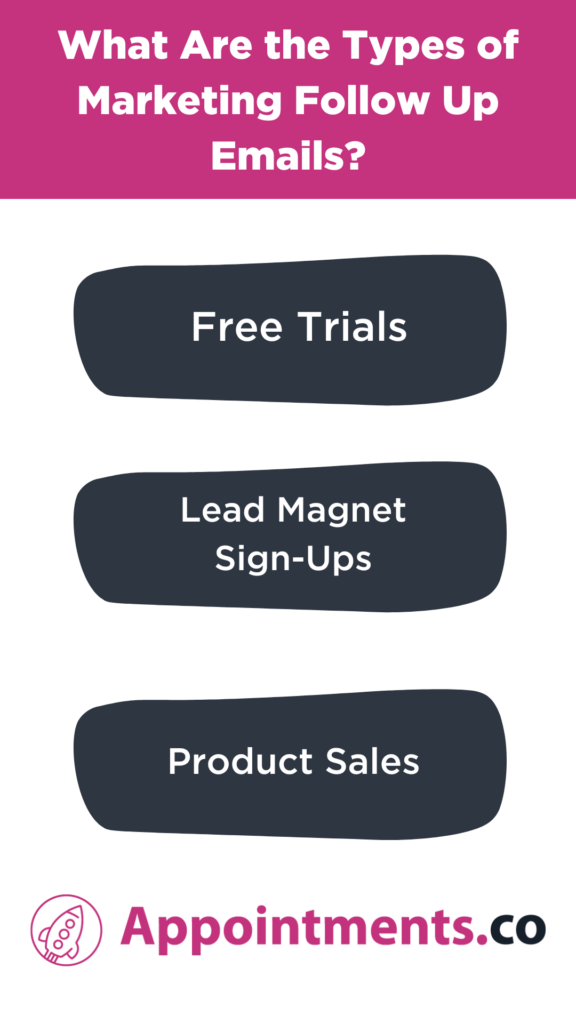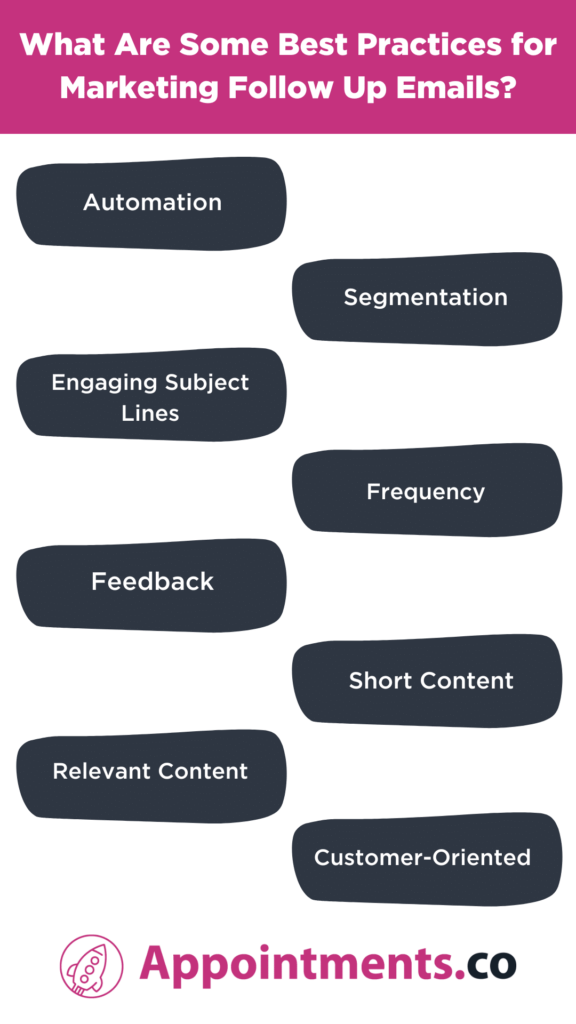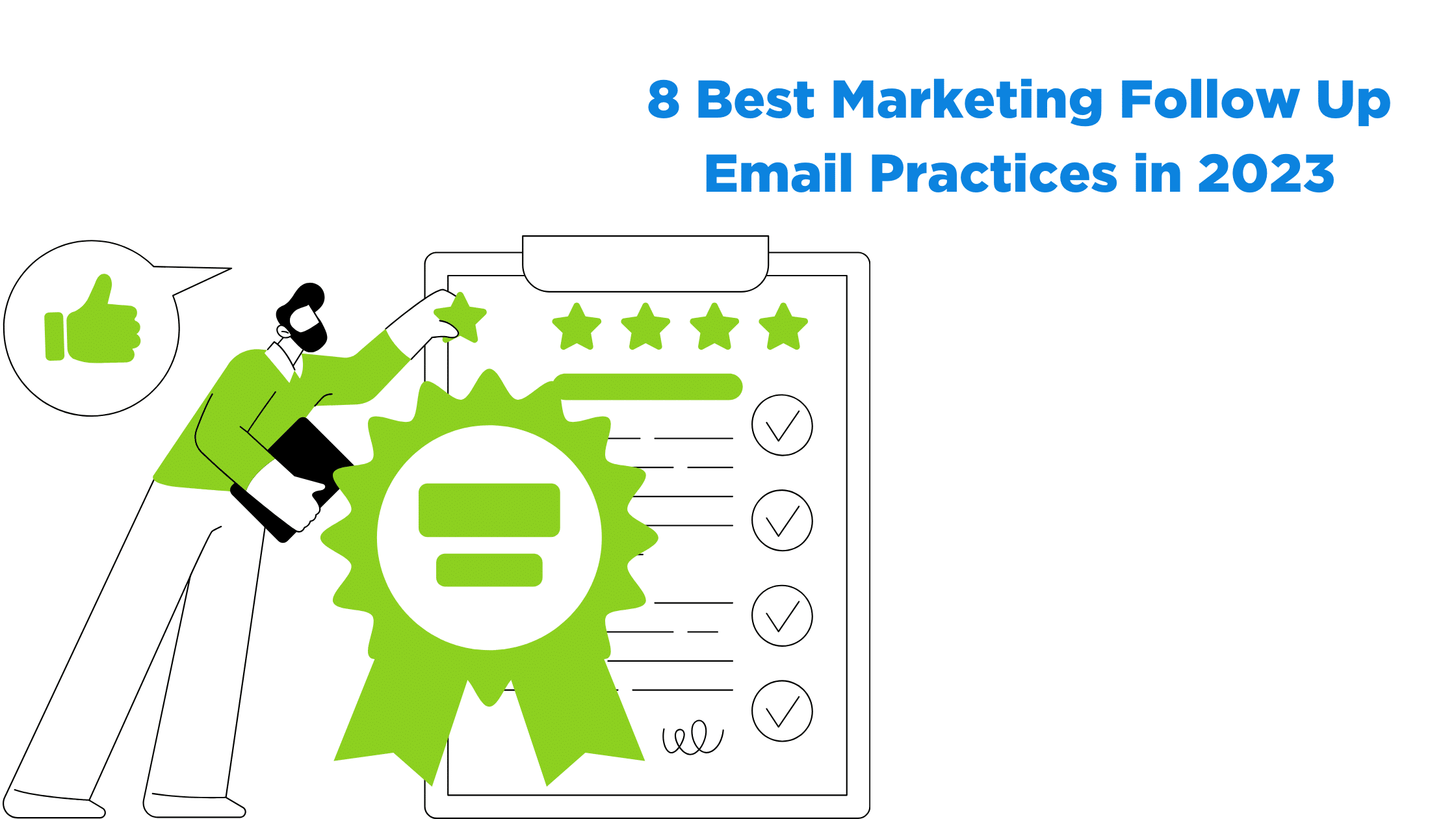Want to improve your email marketing game? Persistence and attention to detail are key. It’s all about knowing when and what to send, and seizing every opportunity. That’s where follow-up emails come in. They’re the perfect way to nudge your subscribers towards taking action, whether it’s upgrading to a paid plan, setting up a B2B meeting, leaving feedback, or making another purchase on your e-commerce site.
So, let’s dive into the art of crafting sales follow-up emails that can skyrocket your open rates, boost responses, and ultimately drive more conversions. Sound good? Let’s get started!
What Is a Marketing Follow Up Email?
So, you’ve made that initial contact and now it’s time for a follow-up email. The great thing about marketing follow up email is that you already have a relationship with the recipient, unlike cold outreach emails. It’s like catching up with an old friend!
Sales teams strategically use marketing follow up emails at different stages of the sales and email marketing funnel. They can help gather important information, remind the recipient about the next steps, or simply keep the customer journey going smoothly. Sending a friendly, polite follow-up email can work wonders in building trust and speeding up the deal-making process.
Now, there are two main types of follow-up emails you’ll come across. First, there’s the transactional kind. These are personal emails sent to complete a specific transaction. They’re more about sharing information rather than pushing a marketing message. For example, a post-purchase marketing follow up email might include details about pricing or shipping.
Then, we have the commercial follow-up emails. These are all about marketing and promotion. They aim to raise awareness, engage the recipients, and ultimately drive sales. They’re like those friendly reminders that say, “Hey, don’t forget about us!”
No matter the purpose of your follow-up email, always remember to keep it polite and friendly. It’s all about building trust and forging stronger connections that lead to successful deals.
What Are the Benefits of a Marketing Follow Up Email?
- Increases lead conversion.
- Builds your customer’s trust.
- Filters your target audience.
- Automates your email marketing.
1. Increases Lead Conversion
We all know how easy it is for emails to get lost in the shuffle. People are busy and inundated with countless messages in their inboxes. That’s why follow-up emails are so valuable. They give you a chance to stay on your customers’ radar and provide them with the support they need throughout their buyer’s journey. It’s all about adding value and being there to assist them every step of the way.
2. Builds Your Customer’s Trust
Marketing follow up emails are all about showing that you genuinely care about your customers. Instead of just sending one cold email and hoping for the best, put in the effort to keep your business on their radar.
This customer-centered approach demonstrates the value your brand places on building relationships. Making follow-up emails effective is a win-win situation for both customers and the brands that send them.
3. Filters Your Target Audience
Not everyone you reach out to is interested or engaged from the start. Some people may have subscribed with the expectation of getting something for free. Follow-up emails help you identify and separate the engaged audience from those who are not likely to engage with your brand. It’s a way to filter out and focus on the individuals who are genuinely interested and willing to communicate with you.
4. Automates Your Email Marketing
Some email marketing services make sending marketing follow up emails very easy, and effortless. You can set up an automated sequence of follow-up emails to cater to specific scenarios. Once you’ve configured the sequence, the follow-up emails will be sent automatically, saving you time and effort. You can sit back and let the system take care of it without needing to manually send each follow-up email.
What Are the Types of Marketing Follow Up Emails?
- Free trial follow-up
- Lead magnet opt-in follow-up
- Product sale Follow-up

1. Free Trials
SaaS companies often provide free trials to let potential customers experience the value of their software. The main objective of follow-up emails in these cases is to convert customers into paid users.
These follow-up emails have two main components: requesting feedback on the product and offering helpful tips to maximize its benefits. Additionally, they subtly mention the availability of even more tools and features within a paid plan, enticing users to consider upgrading.
2. Lead Magnet Sign-Ups
Imagine you have a subscription form where people can sign up and receive a fantastic reward in return. But, here’s the thing, Sometimes, life gets in the way and people abandon the process halfway through. That’s where lead magnet opt-in follow-up emails come to the rescue!
These follow-up emails act as friendly reminders, nudging users to complete their subscriptions. The follow-ups aim to make sure they don’t miss out on the amazing value they can receive by finishing the process. It’s like a little virtual tap on the shoulder saying, “Hey, just a reminder to complete your subscription and unlock all the great benefits!”
So, even if someone got distracted or didn’t have a chance to finish signing up, these follow-up emails are there to bring them back on track and show them what they’re missing out on.
3. Product Sales
In marketing, the goal is to turn one-time consumers into loyal clients. To achieve this, product sale follow-up emails play a vital role by adding value to the initial purchase. After a sale, it’s important to reach out to customers and receive feedback about their experience with the product or service they purchased. This shows genuine care and helps build a stronger relationship.
But it doesn’t end there. In the follow-up email, you can take it a step further by suggesting additional products that complement their original purchase. Offering discounts or special promotions on these extra items incentivizes customers to consider expanding their purchase, and enhances their overall experience. By consistently providing value and showing ongoing support, you can cultivate customer loyalty and turn them into long-term brand advocates.
When Should You Send a Marketing Follow Up Email?
When it comes to follow-up emails, there’s no magical time that guarantees the best results. It all depends on your audience and their schedules. Just think about it – if you send an email follow-up at 3 pm, chances are, many people are caught up in their busy days. So, you can give the evening a shot for your next follow-up to see if that catches their attention.
But hey, if the evening emails aren’t getting the open rates you’re hoping for, don’t worry. You can always try a different approach and send your next follow-up email in the morning. The key is to experiment and find the sweet spot that works for your specific audience.
The great thing about marketing follow up email is that they give you the chance to test and tweak until you hit the mark. Whether you get a “yes” with opens, click-throughs, or shares, or even a “no” with unsubscribes, each response helps you understand your audience better and improve your email game.
So, don’t be afraid to try different variants and track the results. It’s all part of the journey to find the perfect formula that gets your subscribers to take action, whatever that action may be.
How To Write a Marketing Follow up Email
The three main points to differentiate a marketing follow up email from any other email marketing campaign are:
- A follow-up email is a series of emails sent at regular intervals. Finding the right frequency is crucial. You want to stay on your customers’ radar without overwhelming them. Strike a balance that keeps them engaged without being too intrusive. Take the time to determine the optimal frequency for effective customer engagement.
- Keep your follow-up emails engaging by varying the structure while delivering the same idea and value. Describe the benefits in different forms to add excitement and capture your audience’s attention. Mix it up and make each email a delightful experience for your readers.
- Unlike email newsletters, follow-up emails need to be brief and to the point. Transparency and honesty are key, especially in B2B communication where the goal is to reach decision-makers. Keep it concise and straightforward to effectively convey your message.
What Are Some Best Practices for Marketing Follow Up Emails?

1. Automation
Automation is the key to effective marketing follow up emails. It saves you time and improves the buyer experience. By using automation, you can send timely and targeted emails without the hassle of manual work. Embrace automation to enhance your email marketing strategy and boost your revenue potential.
2. Segmentation
You can choose a tool in the email marketing platform, with which you can personalize and make your follow-up emails more relevant. Segment your mailing lists and tailor your messages to specific subscriber groups. This targeted approach enhances the effectiveness of your marketing follow up email strategy. Use the power of segmentation to create impactful follow up emails.
3. Engaging Subject Lines
The subject line is crucial for marketing follow up emails. Make it relevant and enticing to grab recipients’ attention and highlight the benefits they’ll find inside. A compelling subject line can significantly impact your open rates.
4. Frequency
To avoid overwhelming your recipients, it’s recommended to send marketing follow up emails at a descending rate. This means spacing them out with longer intervals as the sequence progresses. By doing so, you maintain a balanced and less intensive email marketing approach. Remember, finding the right balance is crucial for effective communication with your audience.
5. Feedback
In the first marketing follow up email, ask for feedback and show genuine care for your customers. Building trust is essential, and everyone likes to feel valued.
6. Short Content
A marketing follow up email may seem like a simple message, but it holds significant value in convincing people to take action. Its ability to provide value is a strong motivator for fostering loyalty and high engagement among recipients. Don’t underestimate the power of follow up emails in nurturing relationships and driving desired outcomes.
7. Relevant Content
In marketing follow up emails, provide valuable proposals that align with people’s needs. The aim is to make it hard for them to resist taking action by showcasing the benefits they’ll receive.
8. Customer-Oriented
To build successful relationships with your audience, prioritize your customers and their needs. Make them the core element of your business for authentic and genuine connections.
Frequently Asked Questions
1. What is a follow-up in the marketing plan?
A sales follow-up email is a series of emails sent at regular intervals after the initial pitch that encourages the prospects take action.
2. Is it OK to write a follow-up email?
It is a good email marketing practice to send follow up emails without giving after getting no response on the initial try. Add additional value to your audience in your messages through marketing follow up emails.
3. How do you write a warm follow up email?
Here are a few tips on how to write a warm marketing follow up email:
1. Keep your messages short.
2. Personalize your content in follow up emails.
3. Ask questions to trigger a response.
4. Specify your message but keep it simple.
5. Use effective marketing follow up email templates.
The Bottom Line
Marketing follow up emails have two important benefits: boosting sales and building relationships. After learning about their importance and how to create effective sequences, it’s time to focus on managing your follow-up emails.
Remember, the key is to actually follow up. Don’t assume a lack of interest based on a non-response. Most prospects require multiple contacts before saying “yes”. So, don’t give up too soon! Stay persistent, nurture relationships, and provide value until you get that desired response.
Persistence is crucial in follow-up emails. Keep nurturing, providing value, and refining your strategy to increase your chances of success. Stay determined and keep following up to achieve your goals.
Related Reads
- The 12 Best Email Marketing Strategies in 2023
- What Is Email Marketing Services – 5 Best Services Reviewed
- Best Guide To Elevate Your Email Marketing Skills in 2023
- Email Marketing Funnel: 5 Best Steps to Create One
Illustrations – Storyset



